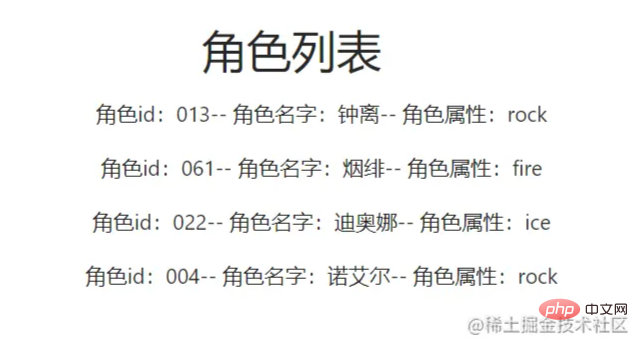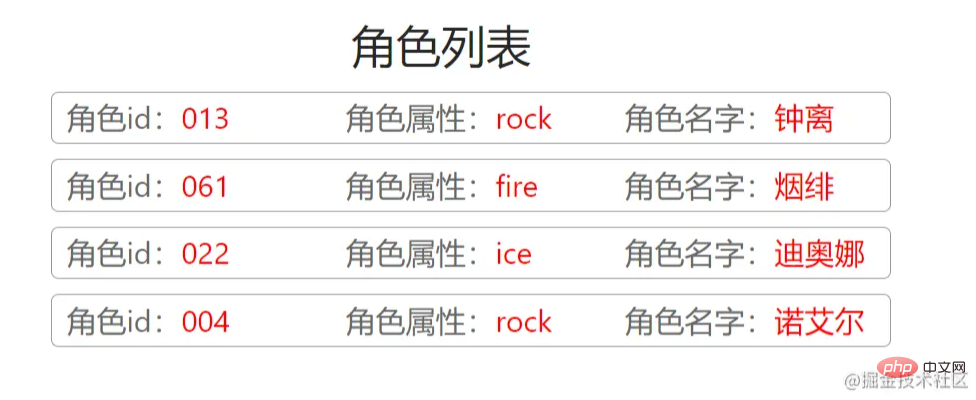聊聊Angular中NgTemplateOutlet指令的理解和用法

最近在看一個培訓專案的時候有看到這個NgTemplateOutlet這個結構性指令,但是我之前沒接觸過,不知道這東西是怎麼用的,然後,我去官網上去搜了一下這個api(官網連結點這裡)。
但是它的這個api說明我看不懂,不知道這個什麼所謂的上下文物件是啥,也不知道這個let變數又是啥。然後經過我一整天的翻檔案,記筆記,終於搞明白了這是什麼東西了,沒有搞明白的小夥伴可以參考一下我的上一篇文章:【Angular學習】關於模板輸入變數(let-變數)的理解
這篇文章就只是說一下NgTemplateOutlet的用法和使用場景。
使用方法
這個api按照官網的說法是這樣的:
根據一個提前備好的
TemplateRef插入一個內嵌檢視。
我給它翻譯一下:使NgTemplateOutlet的宿主元素變成一個內嵌檢視——這個內嵌檢視是根據一個提前定義好的templateRef模板參照生成的。而宿主元素無論是什麼元素,都不會被渲染出來。
我們將官網的範例改一下(因為官網的人命我看不懂):
@Component({
selector: 'ng-template-outlet-example',
template: `
<ng-container *ngTemplateOutlet="one"></ng-container>
<hr>
<ng-container *ngTemplateOutlet="two; context: myContext"></ng-container>
<hr>
<ng-container *ngTemplateOutlet="three; context: myContext"></ng-container>
<hr>
<ng-template #one><span>Hello</span></ng-template>
<ng-template #two let-name><span>Hello {{name}}!</span></ng-template>
<ng-template #three let-person="lastName">My name is <span>LeBron {{person}}!</span></ng-template>
`
})
export class NgTemplateOutletExample {
myContext = {$implicit: 'World', lastName: 'James'};
}一個宿主元素可以使用ngTemplateOutlet這個結構性指令,使自己變成任意的一個<ng-template>模板生成的內嵌檢視。並且可以給其設定上下文物件。然後我們在這個模板中可以使用let-變數這個模板輸入變數來獲取上下文物件中的值,這個模板更具靈活性。
應用場景
類似於ng-zorro這個框架的分頁元件Pagination(官網連結)。如果我們對預設上一頁和下一頁的樣式或者結構不滿意,想要自己調整的話,我們可以提供一個輸入屬性(@Input定義的屬性),來接收一個模板,並且為其提供所必須的屬性或者方法。這樣的話,我們就可以在不修改元件原始碼的情況下實現元件的複用。
Demo
我們先定義一個子元件HeroDisplayCard,角色的展示介面
@Component({
selector:'app-hero-display-card',
template:`
<h2 [style]="{textAlign:'center'}">角色列表</h2>
<ul class="hero-card-box">
<li class="hero-card-item" *ngFor="let h of heroesList">
<p [style]="{textAlign:'center'}">
角色id:{{h.id}}--
角色名字:{{h.name}}--
角色屬性:{{h.features}}
</p>
</li>
</ul>
`,
styles:[
`.hero-card-box{
width: 600px;
margin: 10px auto;
}
.hero-card-item{
list-style: none;
}
`
]
})
export class HeroDisplayCard {
public heroesList = [
{id:'013',name:'鍾離',features:'rock'},
{id:'061',name:'煙緋',features:'fire'},
{id:'022',name:'迪奧娜',features:'ice'},
{id:'004',name:'諾艾爾',features:'rock'},
]
}然後將這個元件引入一個父元件當中:
@Component({
selector:'app-templateoutlet-app-demo',
template:`
<app-hero-display-card></app-hero-display-card>
`
})
export class TemplateOutletAppDemoComponent {}程式碼執行一下,效果如圖:

我覺得這個li的樣式實在是太醜了,而且順序也不太對。我希望把角色屬性調到角色名字之前。這樣的話,如果只是單純的通過輸入屬性來更改樣式的話就會變得很麻煩,我們可能需要定義非常多的變數來供使用者選擇,這樣的話有點得不償失。那麼我們何不直接提供一個模板給使用者,我們只需要提供必要的資料就可以了。樣式,排版這些自由交給使用者。
那麼對於子元件HeroDisplayCard我們可以這麼改:
@Component({
selector:'app-hero-display-card',
template:`
<h2 [style]="{textAlign:'center'}">角色列表</h2>
<ul class="hero-card-box">
<ng-container *ngFor="let h of heroesList">
<!-- 如果沒有傳入cardItemTemplate則顯示預設 -->
<li class="hero-card-item" *ngIf="!cardItemTemplate">
<p [style]="{textAlign:'center'}">
角色id:{{h.id}}--
角色名字:{{h.name}}--
角色屬性:{{h.features}}
</p>
</li>
<!-- 如果傳入了自定義模板,則顯示出來,鑑於angular的結構型指令不能在同一個宿主元素上的規定,於是這樣寫 -->
<ng-container *ngIf="cardItemTemplate">
<!-- 將自定義模板的上下文物件設定為h -->
<ng-container *ngTemplateOutlet="cardItemTemplate;context:h"></ng-container>
</ng-container>
</ng-container>
</ul>
`,
styles:[ //省略 ]
})
export class HeroDisplayCard {
@Input() cardItemTemplate:TemplateRef<any>;
public heroesList = [ // 省略]
}然後我們在父元件中將自定義的模板傳入進去:
@Component({
selector:'app-templateoutlet-app-demo',
template:`
<app-hero-display-card [cardItemTemplate]="myCardTemplate"></app-hero-display-card>
<!-- 將模板參照變數myCardTemplate傳入子元件 -->
<ng-template #myCardTemplate let-id="id" let-name="name" let-features="features">
<li class="hero-card-custom-item">
<p>角色id:<span>{{id}}</span></p>
<p>角色屬性:<span>{{features}}</span></p>
<p>角色名字:<span>{{name}}</span></p>
</li>
</ng-template>
`,
styles:[
//在這裡寫自定義模板的樣式
`.hero-card-custom-item{
width: 100%;
height: 35px;
border: 1px solid #999999;
border-radius: 5px;
display: flex;
justify-content:space-around;
align-items: center;
margin: 10px 0;
}
.hero-card-custom-item p {
width: 30%;
margin: 0;
font-size: 20px;
color: #666666;
}
.hero-card-custom-item p span {
color: red;
}`
]
})
export class TemplateOutletAppDemoComponent {}然後執行一下,效果如圖(其實還是很醜):

總結
使用NgTemplateOutlet這個結構性指令可以增強我們子元件的封裝程度,避免需要定義大量的輸入屬性,導致父元件的模板看起來臃腫不堪。
更多程式設計相關知識,請存取:!!
以上就是聊聊Angular中NgTemplateOutlet指令的理解和用法的詳細內容,更多請關注TW511.COM其它相關文章!